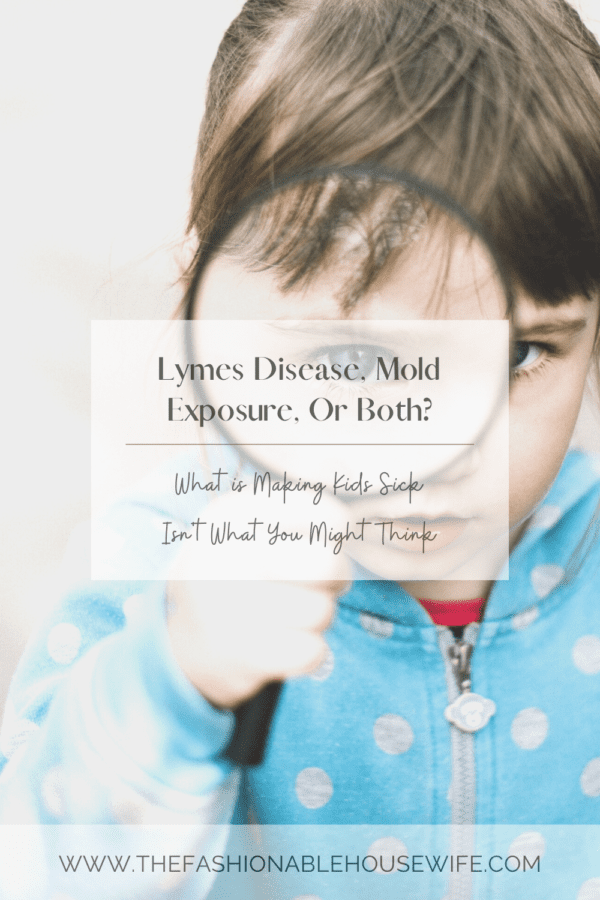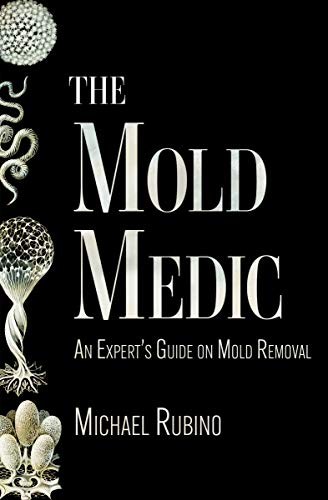
Lyme Disease is rising in children, but parents must beware: your child’s illness may actually be from mold exposure, according to international mold expert, Michael Rubino, President of All American Restoration and author of The Mold Medic: An Expert’s Guide on Mold Removal.
“Mold exposure and Lyme Disease can be a dangerous combination,” says Rubino.
Lyme disease is getting more and more prevalent every year. This disease is caused by a bite from an infected tick and begins to develop in stages. Most of the symptoms fit their diagnosis, so they begin treatment. At first, your child may begin to get a little better, but their symptoms never completely go away or may begin to worsen.
As a society, we look at dozens of causes and triggers for illnesses, but we often forget to look at one of the biggest and most important factors for our health: air quality. When the air we’re breathing, especially in our homes, is contaminated, it can cause a wide range of persistent health problems. One of the largest contributors to poor indoor air quality and adverse health reactions is mold exposure.
If your child isn’t getting better from treatment for Lyme disease, it may be because their symptoms are stemming from mold exposure.
About Mold
Mold spores can be found in every home, just in small amounts. This fungus reproduces by releasing microscopic spores, similar to the seeds of a weed, that ride the wind current right through the front door. With tens of thousands of species of mold already identified, the chances of a mold spore settling inside a home are fairly high if the conditions are right.
The key is to understand and prevent any opportunities for mold growth. While many of us may think that mold only colonizes a home after a big water leak or in old homes with crumbling foundations, that’s not true. Mold needs very little to survive. With oxygen, food sources, and moisture, these little fungi can thrive anywhere in a home. Leaving a window open and allowing a small piece of carpet to get wet can cause mold growth. All it takes is 24–48 hours. Even brand new homes can succumb to mold growth.
The issue with dangerous mold growth is that when it colonizes an area, it continues to release more and more spores. Many mold species are also capable of producing microscopic toxins called mycotoxins. These toxins and mold particles decrease the air quality inside the home, and exposure to them can trigger a long list of adverse health reactions.
Mold Exposure Vs. Lyme Disease
The difficulty in establishing whether it’s mold exposure or Lyme disease as the cause of the illness is how similar the symptoms are. Both can cause a range of respiratory problems in your child (and you!) including a runny nose, coughing, wheezing, and shortness of breath. They can also cause digestive problems, fatigue, “brain fog,” and neurological issues, among other symptoms.
The problem with determining between the two is testing. Lyme disease can be tested for by looking for the antibody produced to fight the disease, but it’s still difficult to 100 percent diagnose. It takes weeks for the antibodies to show on a test, and the antibodies could be from a previous infection. As for mold exposure, there are tests to determine if the body is producing antibodies that are associated with an immune response to an allergen (which in this case would be mold). There is also a test to determine if mycotoxins are present in the body, which can also hint at mold exposure. It is not completely indicative, but it offers a good starting point. Testing indoor air quality is the easiest way to determine if mold exposure might be causing symptoms.
Another indicator to look for during the diagnosis stage is how the symptoms persist. With mold toxicity, symptoms continue day in and day out. When symptoms get worse but then get better, it’s probably not mold exposure.
Mold Exposure and Lyme Disease
Lyme disease and mold exposure can also work in conjunction with each other, making it even more important to understand the air quality in your home. When there’s an established mold presence inside, you’re inhaling large quantities of spores and toxins every time you take a breath. Your body tags these as invaders, creating a histamine response. Your immune system then ramps up to fight the invaders, but when you’re breathing them in all day, every day, it slowly begins to fall behind and allows more symptoms to emerge. Those with weakened immune systems or still developing ones (like children) are at greater risk because they can’t keep up with the onslaught of foreign particles. The symptoms will continue to persist and progress, keeping the body in a constant state of immunosuppression.
With an immune system down, a child is more prone to developing other illnesses or experiencing symptoms like those triggered by Lyme disease. Mold exposure and additional illness will work hand-in-hand to create negative health reactions that never seem to want to go away.
So, Is It Mold Exposure?
If you think your child may be experiencing symptoms of mold exposure, getting your house tested is your number one priority. You may not think your home could have a mold problem, but it’s much easier than you think. We’re even finding that newly constructed homes are just as likely to have mold in them as homes that are 50 years old because of how they’re currently being built. A good mold inspector will be able to tell you if you have a mold problem, what species are present, if mycotoxins are present, and the sources of the problem.
If you find mold and your child is experiencing symptoms from exposure, they will persist until the mold problem is resolved. You’ll need a remediation team to come in to treat your home for all contamination. Make sure to thoroughly clean all of your belongings in the home as well, like clothing, couches, appliances, and books; spores and toxins could have landed on them during the period that you had mold and will continue to cause reactions if they’re not dealt with.
Luckily, mold exposure symptoms are treatable. When the problem at home is gone, doctors can use the mold inspection test results to create a detoxification protocol that will rid the particles from their bodies. Keep in mind that the road to healing may be a long one, but it is an achievable task.
Keeping Your Children Safe
While air quality may not be front and center in medical news, that doesn’t mean it’s not important. We spend so much time worrying about our kids and trying to keep them safe that sometimes we miss bigger issues, like the air they’re breathing at home. And that’s not our fault! It just happens to be a less-discussed topic in our society. But, it doesn’t have to stay that way.
Maintaining awareness of air quality in our homes, understanding mold, and knowing how it can affect our health is something we can all work towards to help keep our children healthy. Parenting is hard enough, but it’s even more difficult with a sick child. Make sure their indoor living space is safe and healthy.
It’s still a good idea to get tested for Lyme Disease if you suspect you might have it because if it’s treated early, you can avoid lifelong chronic conditions that can develop from tick bites.
Buy A Copy of The Mold Medic





